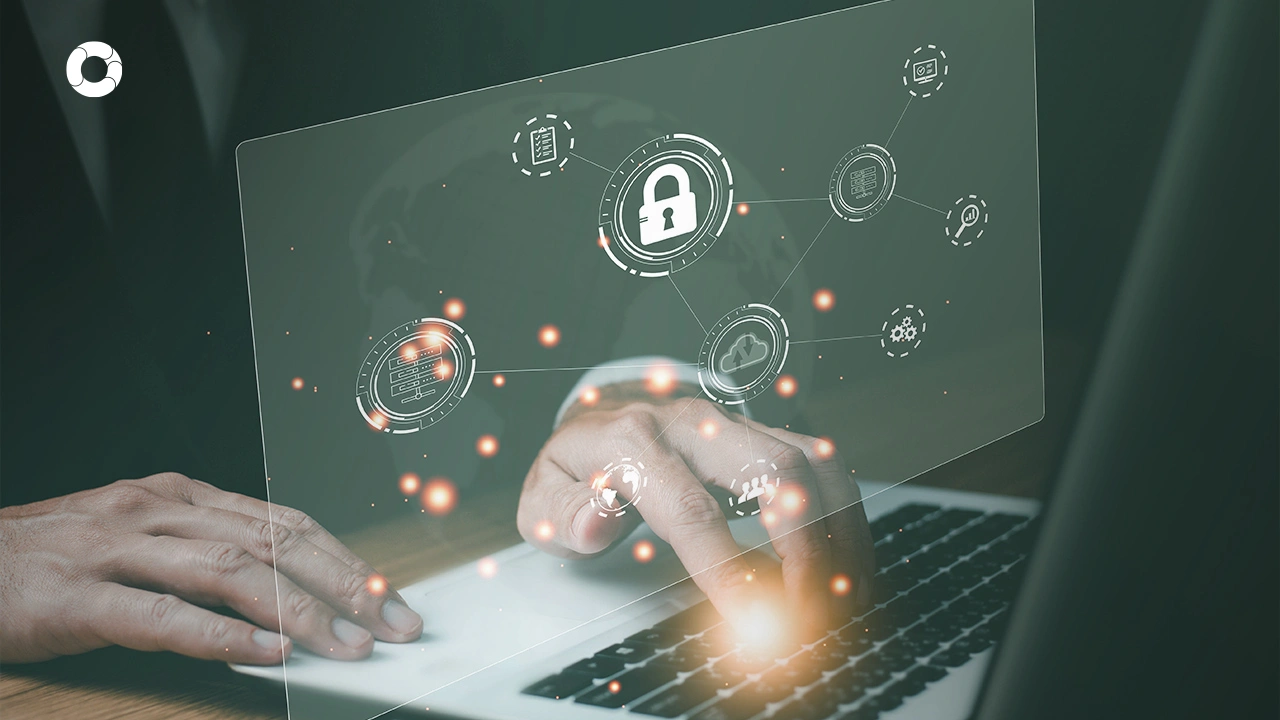Characteristics of a good internal control system

Strengthening the internal control system should be among your organization's top priorities. In this article, we will discuss the main characteristics of an effective internal control system.
|
Contents |
What is an internal control system?
An internal control system is a set of policies, procedures, processes, and activities that an organization implements to ensure the achievement of its strategic and operational objectives. This system not only protects the company’s resources but also ensures the reliability of financial information, promotes operational efficiency, and ensures compliance with applicable laws, regulations, and standards.
Why is it important to implement it?
Implementing an effective internal control system is key to mitigating risks, optimizing processes, and strengthening transparency in business operations. With the right approach, organizations can improve their performance, protect their assets, and ensure compliance with regulatory standards.
What should you know about an internal control system?
An effective internal control system depends on good organization. Reducing errors and irregularities is essential for achieving the system’s objectives effectively. To achieve this, it’s important to ensure the system includes these key characteristics:
- Organization Plan
- Segregation of Duties
- Asset Access Control
- Authorization and Procedure System
- Methods for Processing Data
1. Organization plan
The first characteristic of an internal control system is having a well-defined organization plan. For it to be truly effective, it should be simple, flexible, and adapted to the specific needs of the company.
A good organization plan clearly defines the functions of each area, department, and the roles of the employees within them. This clarity helps avoid task duplication, authority conflicts, and other errors that can affect the system’s efficiency.
What should an organization plan include?
-
Clearly defined procedures:
The plan should effectively integrate the activities of all sectors of the organization, ensuring they work together toward the same goals. -
Structured organizational chart:
An organizational chart is key to defining lines of authority and responsibility within the company. It should include all hierarchical levels: directors, managers, technical leaders, supervisors, etc., facilitating alignment with the company’s strategy. -
Procedure manuals:
It’s essential to document functions, activities, and workflows in clear, accessible procedure manuals. This not only helps standardize processes but also minimizes errors and facilitates the training of new employees.
Benefits of an effective organization plan:
- Promotes transparency and accountability.
- Helps detect bottlenecks and areas for improvement.
- Improves decision-making by clearly defining roles and responsibilities.
- Contributes to operational efficiency by reducing duplication and ensuring proper resource allocation.
Recommendations for an effective organization plan:
- Clearly define roles and responsibilities: Ensure each area and employee knows their role, avoiding duplication and authority conflicts.
- Design an accessible organizational chart: Establish clear lines of authority and responsibility that facilitate strategic alignment within the organization.
- Create procedure manuals: Document key processes with detailed steps and assigned responsibilities to standardize activities and reduce errors.
- Periodically update the plan: Adapt the plan to organizational, technological, and strategic changes to maintain its relevance.
- Communicate and train: Explain the purpose of the plan to employees and reinforce their understanding through training and meetings.
2. Segregation of Duties
The segregation of duties is another essential characteristic of an effective internal control system. This practice ensures structural independence within the organization, meaning that the functions of each area are clearly defined and separated.
The main goal of segregation of duties is to prevent any one person from being responsible for all stages of a process or operation, thus reducing the risk of errors or fraudulent actions.
How does segregation of duties work?
-
Separation of key stages:
Each process should be divided into different stages, and each one should be managed by a different person. For example:- Execution: One employee carries out the operation or activity.
- Authorization: Another employee verifies and approves the transaction.
- Recording: A third person is responsible for documenting it in the system.
-
Defined roles:
It’s essential that each collaborator has a specific role, aligned with the organizational chart and supported by a manual detailing each position’s responsibilities.
Benefits of segregation of duties:
- Fraud prevention: By preventing one person from controlling the entire process, the opportunities for irregularities are reduced.
- Error detection: Independence in roles makes it easier to identify discrepancies or problems at each stage.
- Improved internal control: Establishes a system of checks and balances that strengthens oversight.
- Greater transparency: Promotes trust in internal processes by distributing responsibilities.
Recommendations for implementing effective segregation of duties:
- Design an updated manual of duties that includes the organizational chart, specific tasks for each role, and the responsible persons.
- Conduct periodic audits to ensure duties are properly segregated and procedures are being followed.
- Use technological tools to set access restrictions and differentiated permissions for each system user.
3. Asset Access Control
Asset access control is a fundamental feature of an effective internal control system. This aspect focuses on ensuring the security of processes by limiting who can access the physical, financial, or digital assets of the organization, as well as related accounting records.
What does asset access control entail?
-
Physical access restriction:
Only authorized persons should have direct access to assets like cash, inventory, equipment, tools, or confidential documents. -
Indirect access limitation:
Includes controlling who can prepare, modify, or authorize documents related to the use of assets. This ensures each step of the process is supervised and backed by proper controls.
Benefits of asset access control:
- Fraud and loss prevention: By restricting access, the risk of misappropriation, theft, or misuse of resources is reduced.
- Protection of financial information: Limits who can modify or consult accounting records, ensuring the integrity and accuracy of the data.
- Regulatory compliance: Many regulations require companies to implement strict controls to protect their assets and financial information.
Recommendations for implementing effective access control:
- Define clear roles and permissions: Use technological tools to assign specific access levels according to the employee’s role or function.
- Monitor and audit access: Establish systems that track who accesses assets and when, maintaining an activity history.
- Train staff: Ensure employees understand the importance of access control and related policies.
- Apply physical security measures: Use locks, surveillance cameras, access cards, or biometric systems to protect sensitive assets.
4. Authorization and Procedure System
An authorization and procedure system is essential to ensure the effectiveness of internal control in your organization. This system allows monitoring and verifying the operations and transactions carried out, ensuring that they comply with established standards and internal policies.
Key elements of an authorization and procedure system:
-
Constant monitoring:
Implement mechanisms to continuously monitor records of operations and transactions. This helps identify errors or inconsistencies early. -
Periodic audits and reviews:
Conduct internal audits regularly to verify the accuracy and integrity of processes. These reviews also help identify areas for improvement. -
Independent sources of recordkeeping:
Ensure activity records are created by sources separate from the areas carrying out the tasks. This guarantees impartiality and enables objective comparisons. -
Control reports:
Design clear, structured reports summarizing the results of activities. These reports should be available for audits and reviews.
Benefits of an authorization and procedure system:
- Greater transparency: Improves visibility of operations by documenting and overseeing each step.
- Fault detection: Allows discrepancies to be identified and corrected in real time.
- Regulatory compliance: Helps meet both external and internal regulations, minimizing legal and financial risks.
Recommendations for an authorization and procedure system:
- Establish clear authorization policies: Define who has the authority to approve each type of transaction or activity and document these guidelines in accessible manuals.
- Segregate functions: Ensure that execution, authorization, and recording of operations are carried out by different people to avoid conflicts of interest.
- Implement periodic audits: Conduct regular internal reviews to detect and correct errors or failures in procedures.
- Record activities independently: Assign responsibility for recording activities to a different source from who carries them out to ensure impartiality and accuracy.
- Use technological tools: Employ software to automate authorizations, record transactions, and enable real-time monitoring.
5. Methods for Processing Data
Proper data processing is essential for effective internal control. Depending on the complexity of the organization, methods used may be manual, mechanical, or digital. However, to minimize errors and improve efficiency, it’s advisable to use advanced technological tools that optimize data control and facilitate staff involvement in the process.
Methods for processing data:
-
Manual methods:
Although manual methods can be suitable for small organizations, they carry a high risk of human error and are slower. Their use is recommended only in cases where technology cannot be implemented. -
Mechanical methods:
These methods, such as using recording or control machines, can help speed up some processes but still present limitations in terms of precision and speed, in addition to requiring constant maintenance. -
Digital methods:
Using digital tools is the most efficient option. With specialized software, like Pirani risk management software, organizations can monitor, process, and evaluate data accurately and in real time, reducing the risk of errors and improving internal control effectiveness.
Benefits of using digital methods to process data:
- Reduction of human errors: Automation and digitization minimize the likelihood of data errors or manipulation.
- Greater objectivity: Digital tools enable more precise and transparent data analysis, facilitating objective assessment of internal controls.
- Operational efficiency: Automated systems allow for faster and more effective processing of large volumes of data, improving overall productivity.
- Facilitates decision-making: Real-time access to accurately processed information allows managers to make informed and swift decisions.
Recommendations for implementing data processing methods:
- Adopt suitable technological tools: Use specialized software like Pirani to optimize data management and ensure more effective internal control.
- Train staff in using technology: Ensure your team uses digital tools correctly and can maximize their benefits.
- Keep systems updated: Ensure that technological tools are always up to date to adapt to new regulations and security improvements.
- Conduct digital audits: Use systems that allow you to audit data processing and the application of internal controls more efficiently and transparently.
The implementation of digital methods for data processing significantly enhances the reliability and effectiveness of internal controls, promoting a safer and more efficient working environment.
Now that you know the characteristics, we invite you to explore the components of internal control. We’ve prepared an article for you to dive deeper into this topic.
What did you think of this article on the characteristics of an effective internal control system? Leave us your comments and let us know if you already apply these in your organization.
Create your account on Pirani and learn more about how we can help you take your company’s risk management to the next level.
You May Also Like
These Related Stories

What is risk appetite?

Risk management for software projects

Navigating Risk Management in Banking: A Complete Guide
.jpg)
Control of changes in your organization's risks

Key Elements of an Internal Control Environment



No Comments Yet
Let us know what you think